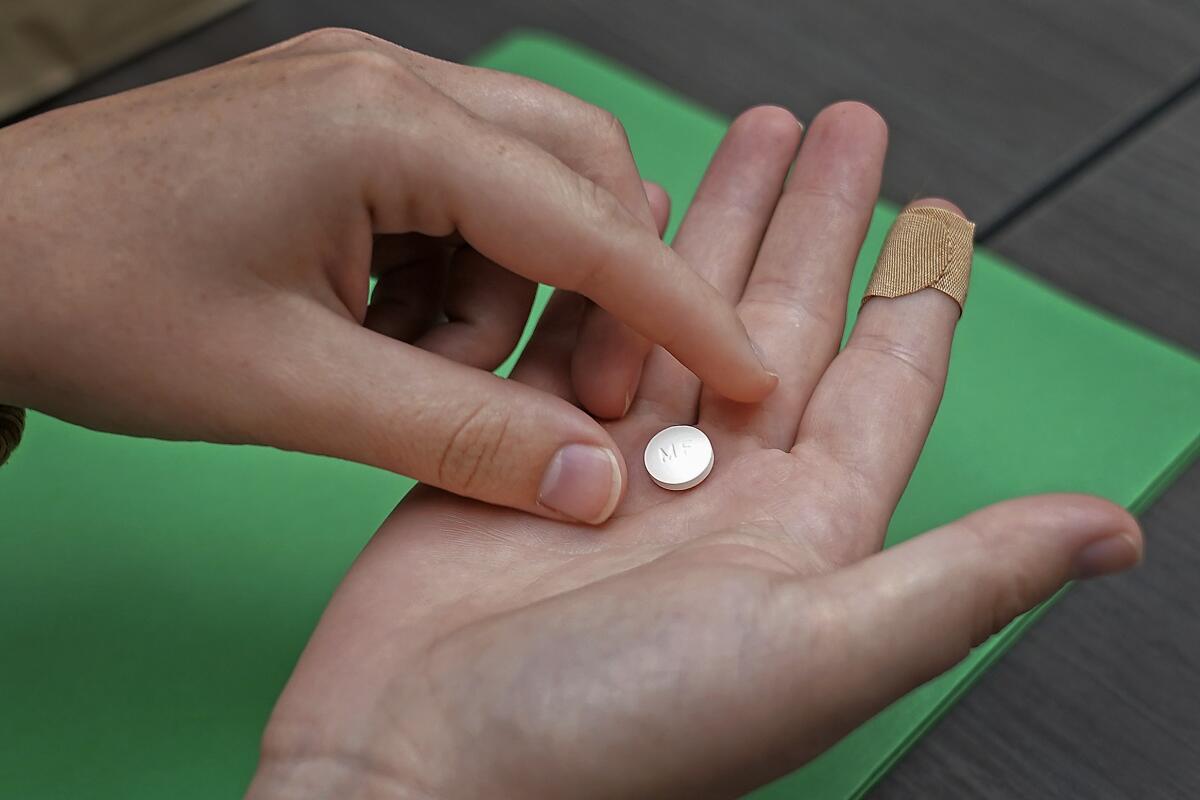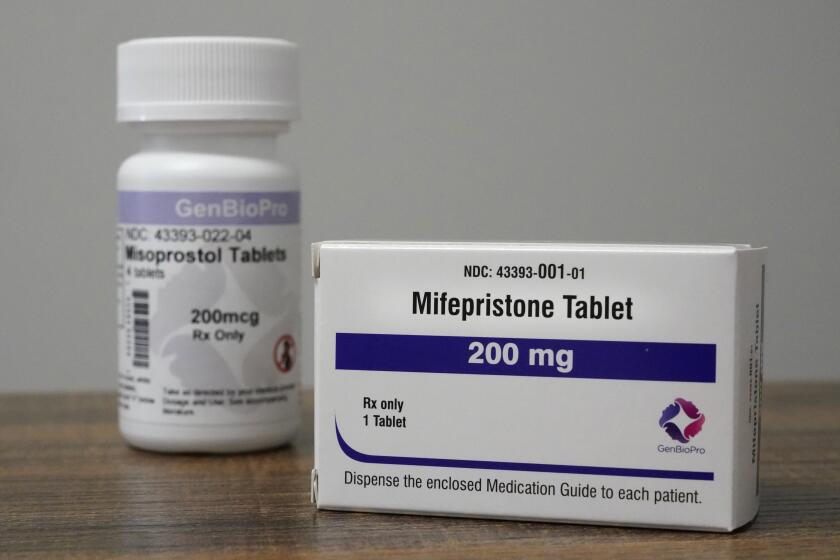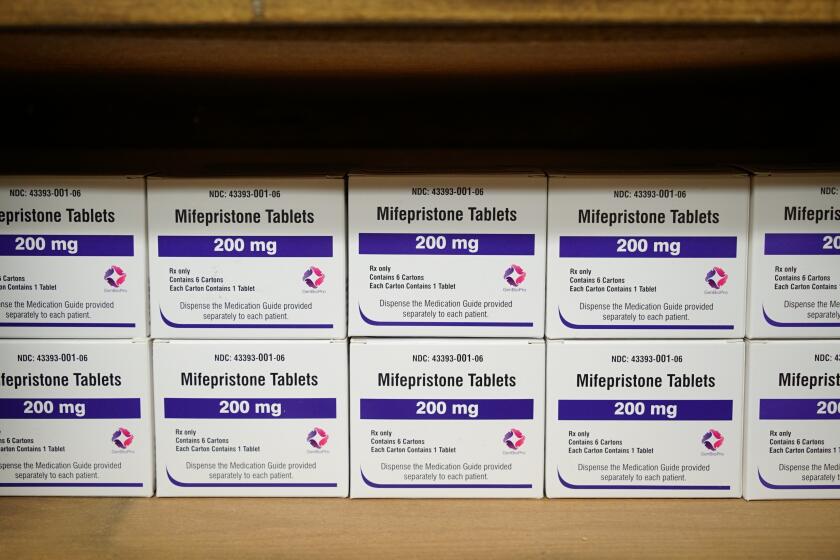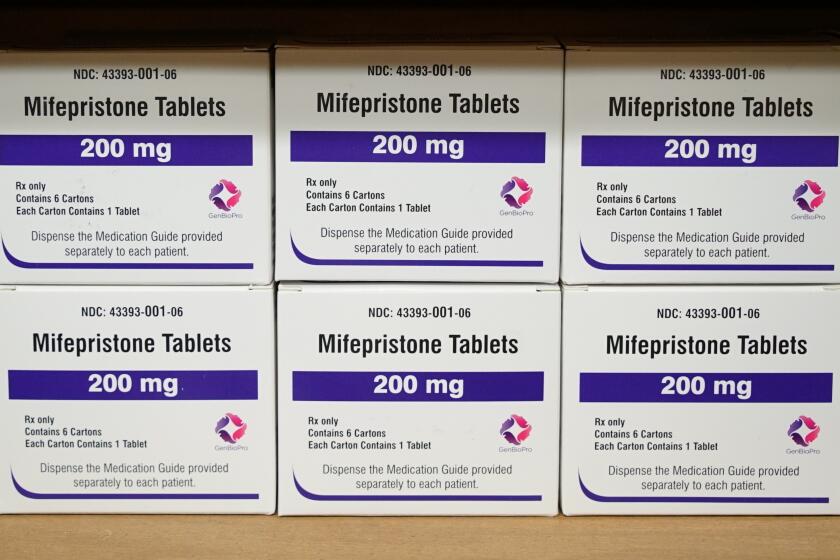Q&A: The FDA says the abortion pill mifepristone is safe. Here’s the evidence

Abortion is back on the docket at the U.S. Supreme Court, with the justices hearing arguments Tuesday about whether a pill used to terminate early pregnancies was properly evaluated by the Food and Drug Administration.
The medication, mifepristone, has been used in the United States more than 5 million times since it was approved for use in 2000, according to Danco Laboratories, the company that sells it under the brand name Mifeprex. Fewer than 0.5% of women who take it experience “serious adverse reactions,” and deaths are exceedingly rare, the FDA says in its prescribing information for doctors.
Mifepristone debuted in France, its home country, and China in 1988. It is now approved in 96 countries, from Albania to Zimbabwe, according to Gynuity Health Projects, a nonprofit that advocates for women’s reproductive rights.
Here’s a closer look at the safety of mifepristone.
The Supreme Court’s antiabortion conservatives will decide whether to restrict abortion pills, including in California and other states where abortion is legal.
What is mifepristone?
Mifepristone is the generic name of a pill that makes up half of the two-drug regimen used in medication abortions in the United States. When used in conjunction with a drug called misoprostol, it can terminate a pregnancy that is in the first 10 weeks of gestation.
The synthetic steroid was originally known as RU-486 (the “RU” stands for Roussel-Uclaf, the French company that developed the pill). It is also sold under the brand name Mifeprex.
How does mifepristone work?
It prevents a natural steroid hormone called progesterone from doing its job, which is to get the inner lining of the uterus ready for an embryo to implant about a week or so after an egg is fertilized.
Mifepristone gets in the way of this process by blocking the receptors that progesterone would normally bind with.
Atty. Gen. Merrick Garland says the justices will be asked to preserve full and easy access to mifepristone, now the most-used method of ending early pregnancies.
How do we know it is safe?
As with other medications, the Food and Drug Administration has monitored mifepristone’s safety profile in the decades since it went on the market. If problems cropped up that weren’t evident during clinical trials, the agency could have revoked its approval.
Instead, it has expanded access to mifepristone. For example, it was initially approved for use during the first seven weeks of pregnancy; in 2016, that window was extended to 10 weeks. Likewise, after the COVID-19 pandemic accelerated acceptance of telemedicine, the FDA in 2021 stopped requiring patients to see a healthcare provider in person in order to get a mifepristone prescription.
Those two decisions are at issue in the cases going before the court Tuesday.
“Hundreds of medical studies and vast amounts of data have confirmed its safety and efficacy as part of this two-drug regimen,” the American College of Obstetricians & Gynecologists, the American Medical Assn., and other medical societies wrote in a friend-of-the court brief filed on behalf of the FDA and Danco. The brief noted that “major adverse events occur in less than 0.32% of patients” and that “the risk of death is almost non-existent.”
As the Supreme Court weighs limiting access to mifepristone, here are some of the numbers on abortion pill usage in the U.S. and California.
Another sign of the drug’s safety is the fact that medication abortions have overtaken surgical abortions in the United States. Last year, 63% of abortions nationwide were carried out with mifepristone, according to the Guttmacher Institute, a nonprofit research group that supports reproductive rights.
Are there side effects to taking mifepristone?
There can be. According to the FDA, the most common ones include headaches, weakness, dizziness, nausea, vomiting, diarrhea, fever and chills.
The serious side effects to watch out for after using both drugs in the regimen are heavy bleeding (which the FDA describes as “enough to soak through two thick full-size sanitary pads per hour for two consecutive hours”), abdominal pain, a fever above 100.4 degrees Fahrenheit that lasts for at least four hours, and “feeling sick” more than a day after taking misoprostol.
Symptoms like these could be signs of a life-threatening infection, an ectopic pregnancy or another serious problem. Anyone experiencing them should contact a healthcare provider right away.
Two studies cited by a judge in a ruling restricting the abortion medication mifepristone were retracted. But they’re still being cited in an appeal to the Supreme Court.
Can mifepristone be fatal?
The FDA says it is aware of 32 women who died after taking mifepristone between September 2000 (when it was first approved in the United States) and the end of 2022.
However, it’s not clear that mifepristone was responsible for any of these deaths. Two of them were definitely caused by ruptured ectopic pregnancies, several died of drug intoxication or overdoses, and at least two women who took the pill were victims of homicides, the FDA said. As for the remaining cases, patients were taking other medications or undergoing treatments at the same time, making it difficult to pin the blame on mifepristone, according to the agency.
In their legal brief, the medical groups said that in the worst-case scenario, the drug could have caused no more than 13 of the 32 deaths. That makes the drug less dangerous than using “Viagra or getting one’s wisdom teeth removed.”











